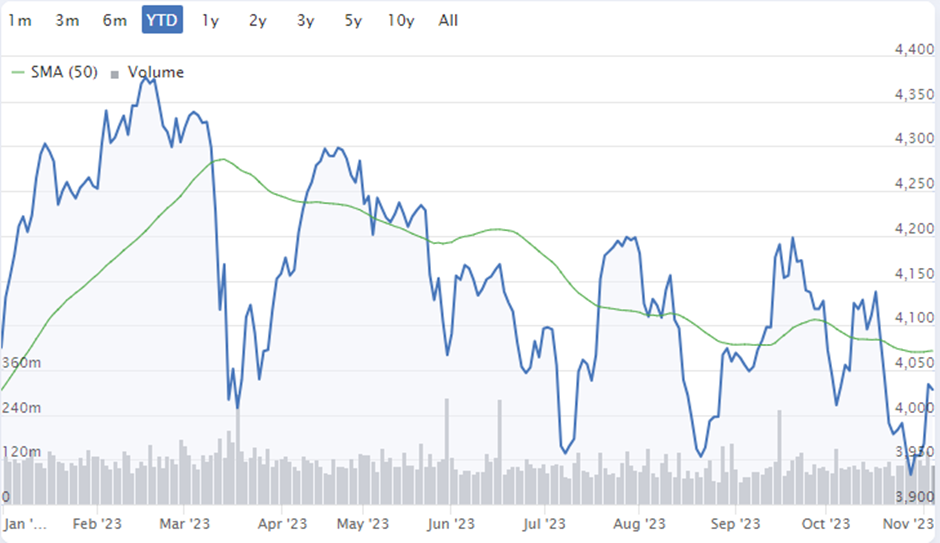Is investing a form of gambling?
One of the common misconceptions amongst the general public is that investing is simply a form of gambling. It can sometimes feel like it is even to investors. Especially in current markets where small caps can move up or down over 10% daily on no news. This year, investing in the FTSE All Share has been little better, with rapid moves up and down in a largely range-bound market:

Despite this, two key distinctions mean investing is not gambling:
- The first is that investors own an asset. That is part ownership of a company that makes sales and profits, which it reinvests into growth or returns to shareholders (or it intends to do these things in the future). In contrast, a gambler is wagering on an uncertain outcome via a contract with an external party, without owning an asset. Bets are not usually transferrable either, whereas the point of investing in a listed stock is that it can be sold at any time (within market hours).
- Secondly, an investment has a positive expected return. On average and over the long term, stocks generate a return above the rate that can be earned in short-term government bonds, the so-called risk-free rate. This difference is known as the equity risk premium and is the excess return the average stock market investor receives. In contrast, a gambler bets against a “House” who sets up the wager or prices the odds so that the expected return is always negative. A sensible gambler only bets when they believe an individual bet has a positive expected return. I.e. they think that the odds offered do not reflect the odds in reality. However, in aggregate, the system is set up such that gamblers have a negative expected return. The house always wins.
It is possible to think of many cases which meet one but not both of these criteria. For example, mathematician Ed Thorp famously devised a system of card counting at Blackjack. He bet minimally when the deck was unfavourable and aggressively when the cards were stacked in his favour. He calculated that this gave him a positive expected return. Which it did do, and for many others, too, when he wrote a book about it called Beat the Dealer. However, casinos quickly adapted the game to introduce multiple decks…






